(RETURN)
SAIL VOLUME III
III.
AUSTRALIAN TRADERS
GOLDEN FLEECE (1869 - 1885),
tonnage 1,318 gross and 1,257 net, length 223ft, beam 37ft, depth
22ft 3in.
Costructed of iron by
Barclay, Curle & Co, Glasgow, for A. & J.H. Carmichael.
She was the
Carmicaels' favorite ship and much admired by
others.Basil Lubbock
comments that she was "one of those
all-round ships
which sailed well
both in hard weather and light, and was as good on the wind
as off it."
Her
reputation was such that she got good charters. She also established a
fine passage record: London to
Sydney in 72
days, in
1871, New York to Liverpool in 13 days 1874, Calcutta to Batavia 22
days in 1879,
Liverpool to
Calcutta in77 days in 1880 and San
Francisco to Queenstown (Cobh) in104 days in 1884.
In
1885, she
stranded on Fly Island and was a total
loss.
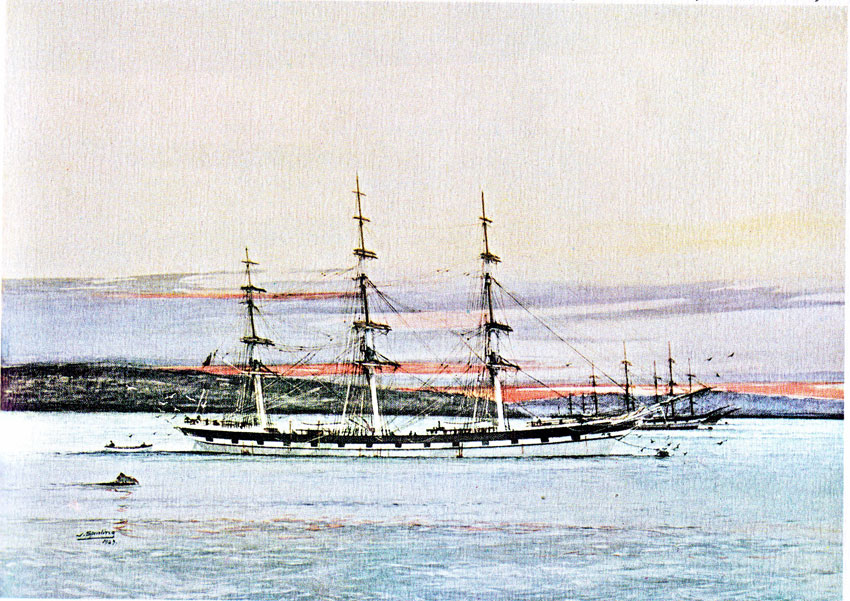
OLD KENSINGTON
(1874 - 1909), 1,817 gross tons and 1,777 net tons, length 262ft, beam
42ft 1 in,
depth 23ft 8in.
Constructed of iron, built by
Potter, Liverpool, for Smith, Bilbrough & Co. She was built for
the
Australian passenger trade. She established a reputaion for short
passages.
Her maiden voyage in 1875,
Liverpool
to Melbourne, was in77
days, In 1876, her voyage London to Melbourne was in 73 days, in
1878 in 76
days, and in 1880 78days. Up to 1880, she loaded wool
for the return journey and her average
passage time
was 90 days
By 1881, the passenger and emigrant trade was being taken over by
the steamers.
In 1881, she
transferred to the Calcutta jute trade. After ten years in thius trade,
she was forced into looking
for
cargoes and longer voyages. In 1900/01, she was sold to
Bremen owners
and renamed CHRISTEL.
In 1909, she
was no longer in the register.
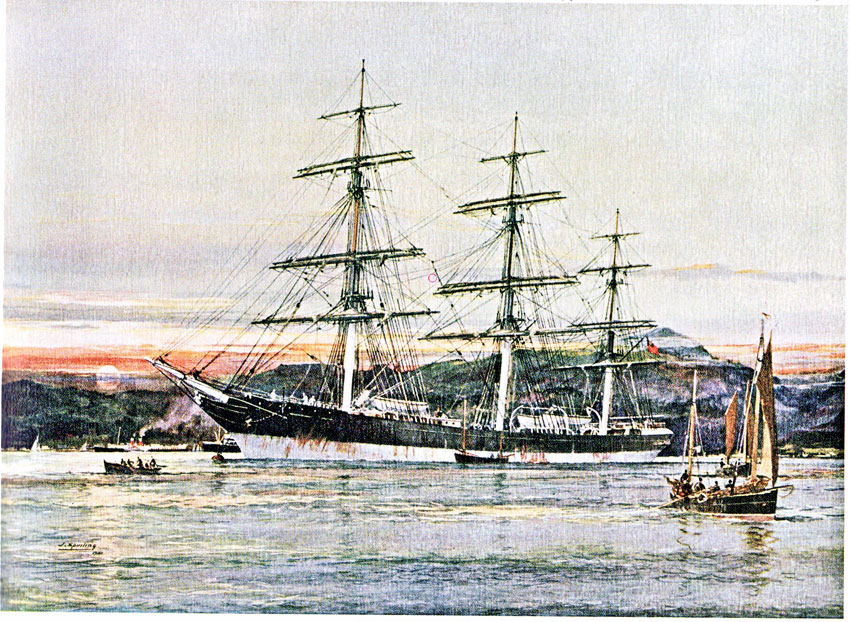
SELKIRKSHIRE
(1878 - 1905), tonnage 1,271 gross and 1.192 net, length 228ft
4in, beam 35ft 8in,
depth 20ft 4in.
Constructed of iron and
built by Birrel, Stenhouse, for David Law of the Scottish Shire
Line..
A barque built
to carry emigrants.in the Queensland trade. Described by
Basil Lubbock as a fast medium
clipper.with a
turn of speed. In
1897 she ran between Yokohama andand Portland, Oregon, in 22 days
faster than any
steamer at that time. She carried grain back from
Portland. On her next voyage from
Glasgow she
reached Fremantle in 80
days As the steamers took over the emigrant trade in eighties,
she became a
general cargo trader. In 1905.she was sold
to Norwegian
owners and renamed AVENTA.
She was
abandoned
at sea in that sane year.
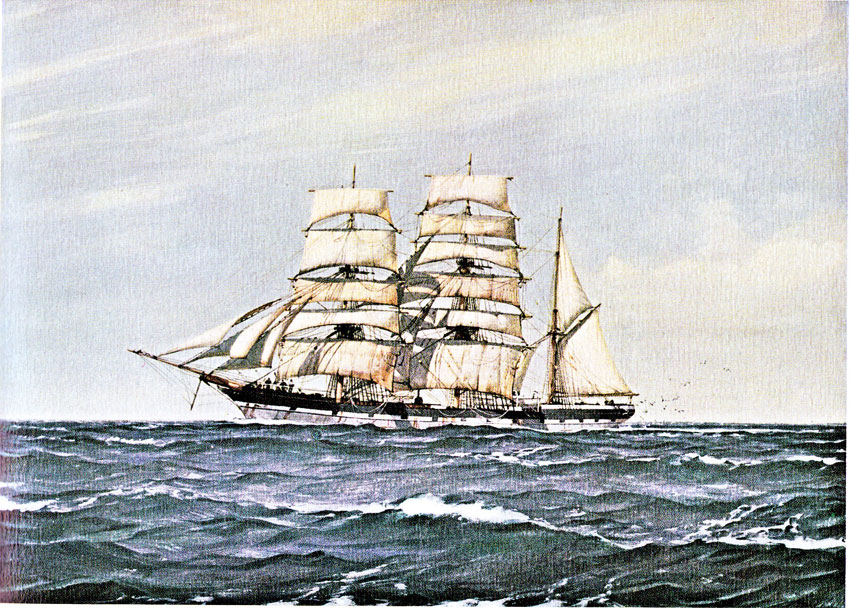
STRATHDON -
ex- QUEEN'S ISLAND (1885 -1924), 2093 gross tons and 2,038 net
tons, length
282ft 8in, beam
40ft 5in, depth 23ft
6in. Constructed of steel by Harland & Wolff, Belfast,
for S. Lawther.
She was the
largest three masted barque when built.
She was too big and
long for a three masted barque
and should have
had four masts.
Her best performance was made in 1888 when she crossed the
Pacific
from San
Francisco to Newcastle, N.S.W., under favourable
conditions, in 38 days at an average speed
of 7 knots.
In 1890, she was
sold to the Aberdeen
White Star Line, renamed STRATHDON, and put in
the Sydney
trade
She was not considered fast enough
for shipments early in the season but geneally
succeeded in
getting a wool cargo towards the end of the season. Her
passages outward
and homeward
were generally
over 100 days. With increased
competition after 1900 in the wool trade, STRATHDON
like
many others had to go to Norway or Western Canada for lumber
cargoes or U.S. west coast ports
for cargoes of
grain. In 1905,
she was sold to
French owners
and renamed GERA. In 1924, she passed
to the ship
breakers.
, 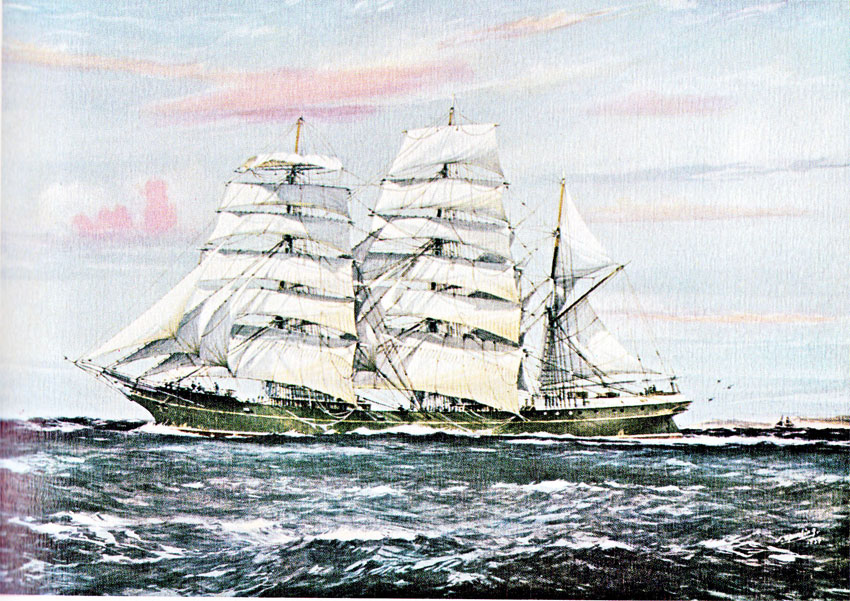
TAMAR (1889 -
1923), 2,112 gross tons, length 286ft 6in, beam 42ft 5in, depth 24ft.
Constructed
of steel, built
by Napier, Shanks
& Bell, Dumbarton, for Devitt Moore - a three masted ship rigged
steel vessel
and the last ship built for that firm.
She was put in the Australian trade and did well
with her cargo
capacity of 4,000 tons. In 1898, she was unable to get a
return cargo from Australia
and took coal
to San Francisco and returned
with a cargo of wheat. In 1900, she was sold to
T.A
Shute of
Liverpool who put the ship in the South American trade.
Carrying coal out and
returning with
nitrates from Chile.
She survived World War I, and was in the
wheat trade for a
brief period
after the War. She was laid up in 1921, and
sold to ship breakers in 1923.
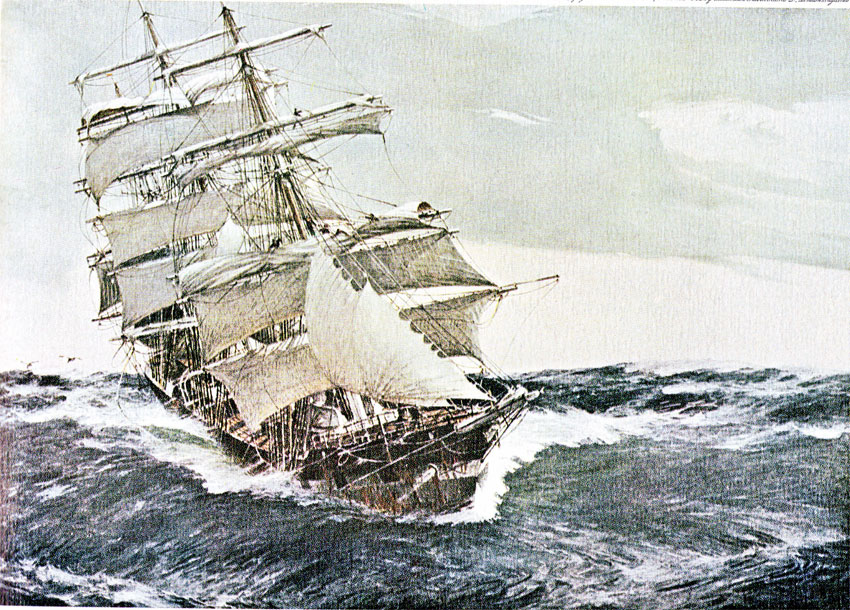
(RETURN)




